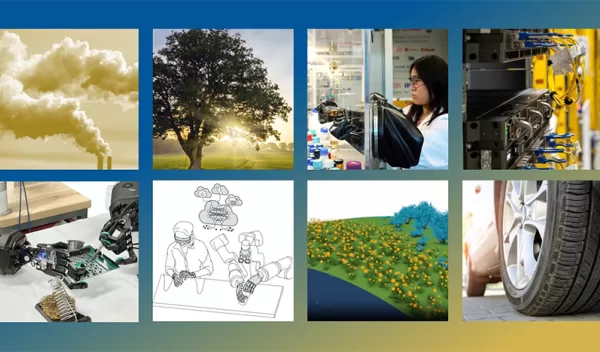
NSF announces 4 new Engineering Research Centers focused on biotechnology, manufacturing, robotics and sustainability
Engineering innovations transform our lives and energize the economy. The U.S. National Science Foundation announces a five-year investment of $104 million, with a potential 10-year investment of up to $208 million, in four new NSF Engineering Research Centers (ERCs) to create technology-powered solutions that benefit the nation for decades to come.
"NSF's Engineering Research Centers ask big questions in order to catalyze solutions with far-reaching impacts," said NSF Director Sethuraman Panchanathan. "NSF Engineering Research Centers are powerhouses of discovery and innovation, bringing America's great engineering minds to bear on our toughest challenges. By collaborating with industry and training the workforce of the future, ERCs create an innovation ecosystem that can accelerate engineering innovations, producing tremendous economic and societal benefits for the nation."
The new centers will develop technologies to tackle the carbon challenge, expand physical capabilities, make heating and cooling more sustainable and enable the U.S. supply and manufacturing of natural rubber.
The 2024 ERCs are:
- NSF ERC for Carbon Utilization Redesign through Biomanufacturing-Empowered Decarbonization (CURB) — Washington University in St. Louis in partnership with the University of Delaware, Prairie View A&M University and Texas A&M University.
CURB will create manufacturing systems that convert CO2 to a broad range of products much more efficiently than current state-of-the-art engineered and natural systems.
- NSF ERC for Environmentally Applied Refrigerant Technology Hub (EARTH) — University of Kansas in partnership with Lehigh University, University of Hawaii, University of Maryland, University of Notre Dame and University of South Dakota.
EARTH will create a transformative, sustainable refrigerant lifecycle to reduce global warming from refrigerants while increasing the energy efficiency of heating, ventilation and cooling.
- NSF ERC for Human AugmentatioN via Dexterity (HAND) — Northwestern University in partnership with Carnegie Mellon University, Florida A&M University, and Texas A&M University, and with engagement of MIT.
HAND will revolutionize the ability of robots to augment human labor by transforming dexterous robot hands into versatile, easy-to-integrate tools.
- NSF ERC for Transformation of American Rubber through Domestic Innovation for Supply Security (TARDISS) — The Ohio State University in partnership with Caltech, North Carolina State University, Texas Tech University and the University of California, Merced.
TARDISS will create bridges between engineering, biology, and agriculture to revolutionize and on-shore alternative natural rubber production from U.S. crops.
Since its founding in 1985, NSF's ERC program has funded 83 centers (including the four announced today) that receive support for up to 10 years. The centers build partnerships with educational institutions, government agencies and industry stakeholders to support innovation and inclusion in established and emerging engineering research.
Visit NSF's website and read about NSF Engineering Research Centers.
